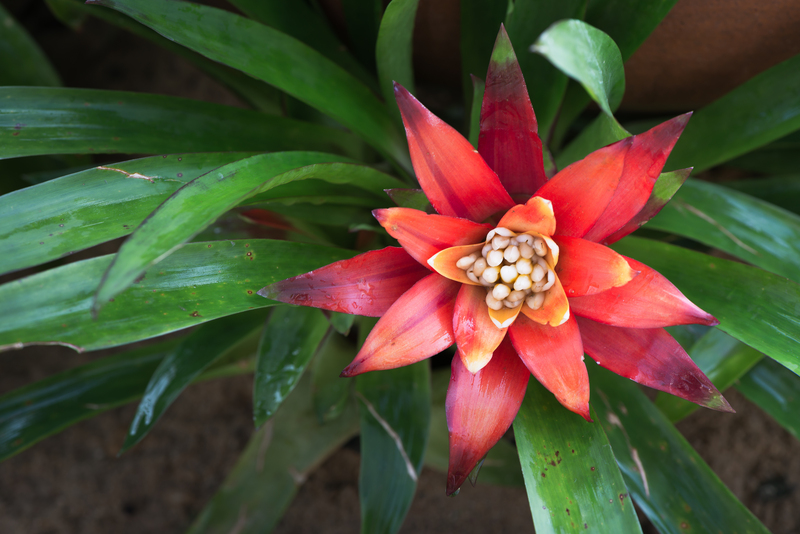Mastering the Art of Hedge Trimming Styles
Posted on 12/09/2025
Mastering the Art of Hedge Trimming Styles
Hedges are more than just a boundary for your property--they're a living canvas that can dramatically enhance your landscape's aesthetics, provide privacy, and even influence the mood of your outdoor space. Mastering the art of hedge trimming styles can turn an ordinary garden into a stunning haven. In this comprehensive guide, we'll dive into various hedge trimming styles, techniques for achieving them, expert tips, and how to properly care for your hedges year-round. Whether you're a green thumb or a beginner, this SEO-optimized article will provide everything you need to know to become a true hedge artist.
Why Hedge Trimming Styles Matter
Proper hedge styling does more than elevate curb appeal--it also supports the health of your plants, encourages dense foliage, and promotes natural boundaries that enhance your property's value. Understanding different hedge trimming styles helps you choose the best look to match your garden's character and functional needs.

Popular Hedge Trimming Styles to Transform Your Landscape
Your choice of hedge trim style can set the tone for your entire garden design. Let's explore some of the most popular and enduring shapes that professional landscapers and homeowners adore:
Crisp Formal Hedge Style
Formal hedges are characterized by their immaculate, geometric shapes. This style exudes sophistication and order, perfect for structured or English-inspired gardens. Formal hedges demand regular maintenance but, with precise trimming, they become living sculptures that anchor your design.
- Common shapes: straight lines, rectangles, squares, and flat tops.
- Best for: boxwood, privet, yew, and hornbeam.
- Maintenance: Needs frequent pruning for sharp edges.
Soft Informal Hedge Style
Unlike their formal counterparts, informal hedges favor a more relaxed, natural look. Trimming aims to maintain the plant's natural growth habit while controlling size and shape.
- Common shapes: flowing curves, natural undulations, uneven tops.
- Best for: lilac, forsythia, spirea, and viburnum.
- Maintenance: Minimal pruning--just enough for tidiness and health.
Classic Tapered Hedge Style (A-Frame)
Tapered or A-frame hedges are narrower at the top and wider at the base, ensuring sunlight reaches all foliage. This styling prevents "leggy" growth and maintains thick coverage from top to bottom.
- Advantages: Supports hedge health and fullness.
- Best for: large boundaries and privacy screens.
Topiary Art and Creative Shapes
For those craving creativity, topiary hedge trimming takes artistry to another level. Transform shrubs into animals, spirals, or any imaginative form--this style is a showstopper in formal gardens and public parks.
- Skills needed: Patience, precision, and regular trims.
- Plants used: boxwood, privet, yew.
Natural Privacy Screens
Many homeowners use hedges for privacy. These styles focus on dense, tall growth--either in a straight line or gentle curves. Minimal shaping keeps maintenance simple, while delivering a lush green barrier.
- Popular choices: arborvitae, laurel, leyland cypress, holly.
- Tip: Trim for height periodically to prevent legginess.
Techniques and Tools for Masterful Hedge Trimming
Achieving any of these hedge trimming styles requires tailored approaches for technique and tools. Here's how to ensure results that impress:
Essential Tools for Stylish Hedge Trimming
- Hedge shears: Traditional, for clean, sharp cuts on small to medium hedges.
- Electric hedge trimmer: For fast, efficient cutting on long or large hedges.
- Loppers and pruners: Tackle thick branches within the hedge body.
- String line and stakes: Achieve those razor-sharp straight lines or curves.
- Spirit level: For the most precise geometric or formal shapes.
- Protective gear: Gloves, goggles, and earmuffs for safety.
Step-by-Step Techniques for Pristine Hedge Trimming
- Preparation: Clean and sharpen your tools. Observe hedge shape and any uneven growth.
- Mark your design: Use string and stakes to outline your desired hedge shape, especially for formal styles.
- Begin at the top: Start trimming from the top, working your way down. Hold trimmers at a slight upward angle for tapering.
- Trim the sides: Maintain symmetry by moving parallel to the hedge. For A-frames, ensure the base is broader than the top.
- Finishing touches: Remove cuttings, inspect for missed spots, and snip any stray branches for a uniform look.
Timing Is Everything
The timing of hedge trimming plays a crucial role. Shape hedges during their dormant period for most plants (late winter to early spring), but avoid heavy pruning during peak growing seasons, especially for flowering species.
Choosing the Right Hedge and Style for Your Garden
Not all hedges suit all styles. Your hedge's growth habit, foliage type, and preferred environment will affect your choice of trimming style.
- Fast-growing hedges: Best for privacy screens and informal styles.
- Dense evergreens: Perfect for geometric and topiary shapes.
- Flowering shrubs: Suit informal or natural privacy hedges--trim after blooming.
Assess sunlight, soil, and climate to ensure optimum growth. Consult with local nurseries for the best hedge species for your region.
Maintaining Healthy, Stylish Hedges: Pro Tips
Maintaining your carefully styled hedges ensures they look vibrant and remain healthy for years. Here's how to keep them in top condition:
Regular Pruning
Frequent light trimming is preferable to infrequent heavy cuts. This approach:
- Encourages bushy, dense growth
- Prevents overgrown, woody stems
- Helps maintain the desired shape
Feeding and Watering
Hedges need nutrients and water for lush architecture:
- Apply slow-release fertilizer each spring.
- Water deeply through dry spells.
- Mulch base to suppress weeds and retain moisture.
Disease and Pest Management
Check hedges regularly for signs of pests, such as leaf discoloration, wilted shoots, or holes. Take preventive action:
- Remove infected branches promptly
- Promote air circulation (especially important in formal, dense hedges)
- Use organic insecticides or consult a professional if needed
Advanced Hedge Trimming Styles and Inspiration
Feeling inspired to try something beyond the basics? Consider these advanced hedge trimming variations:
Layered or Tiered Trimming
Achieve a multi-level effect by shaping different hedge 'floors'--ideal for grand entrances or formal gardens. Each layer grows in a distinct horizontal band for visual drama.
Wave Pattern and Curved Edges
Add movement and softness to long boundaries by trimming undulating waves or scalloped tops. This style breaks monotony and pairs beautifully with naturalistic landscaping.
Spiral and Cone-Shaped Topiary
A true test of precision, shaping spirals or cones creates a focal point that draws the eye and brings playful sophistication to your garden.
Mixed Hedge Borders
Combine different species and styles in one hedge for color, texture, and seasonal interest. Alternate formal and informal shapes for creative flair.
Japanese Cloud Pruning (Niwaki)
This artistic approach uses clouds of clipped foliage, exposing some branches for a "floating" look--perfect for zen or minimalist gardens.

FAQ: Master the Art of Hedge Trimming Styles
How often should I trim my hedges?
Trimming frequency depends on the hedge type and desired style:
- Formal hedges: Every 4-6 weeks during the growing season.
- Informal hedges: 1-2 times a year, usually after flowering.
- Fast growers: May need monthly attention in spring/summer.
What's the easiest hedge to maintain stylishly?
Boxwood and privet are popular for low-maintenance, stylish hedges, due to their dense growth and tolerance for shaping.
How can I fix a patchy, sparse hedge?
Frequent light pruning encourages hedges to fill out. Feed with a balanced fertilizer, water well, and avoid cutting back into old wood--most plants won't regrow from there.
Should I use a power trimmer or do it by hand?
Hand tools offer greater precision for tight shapes and crisp edges, while power trimmers are better for large or rough initial cuts. For intricate styles, always finish by hand.
When is the best time to trim flowering hedges?
Prune immediately after flowering to avoid removing next year's blooms.
Conclusion: Bring Out the Best in Your Landscape with Stylish Hedge Trimming
Mastering the art of hedge trimming styles doesn't just enhance your outdoor space's beauty--it fosters healthy, happy plants that reward you with year-round greenery and charm. Whether you prefer sleek formal lines, wild and woolly curves, or sculptural topiary art, understanding the principles of cutting and shaping will help you create and maintain a landscape that inspires. Don't be afraid to experiment--your garden is a gallery, and each hedge is a living work of art!
Ready to take your garden to the next level? Grab your shears, try different hedge trimming styles, and cultivate a lush backdrop that perfectly frames your home. With the tips and techniques in this guide, you'll soon become a hedge trimming master, admired for your creativity and skillful maintenance.



